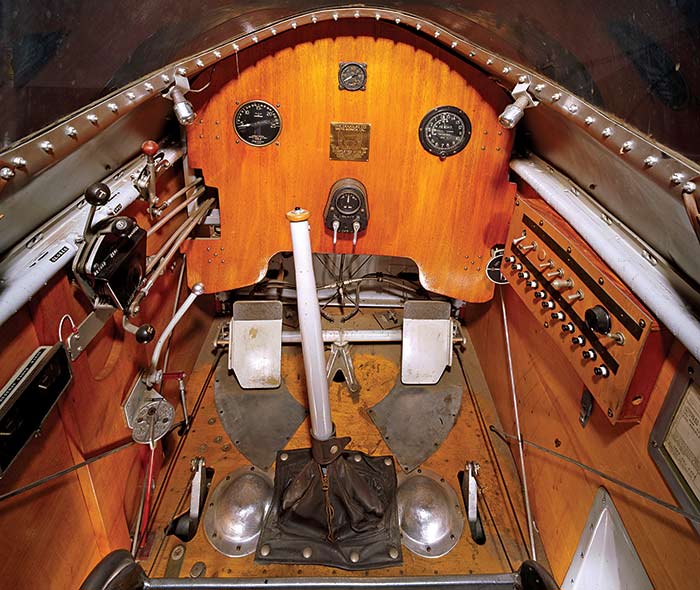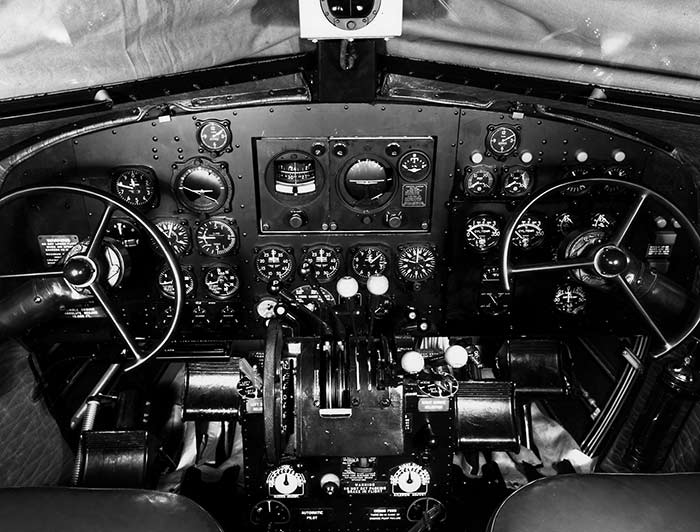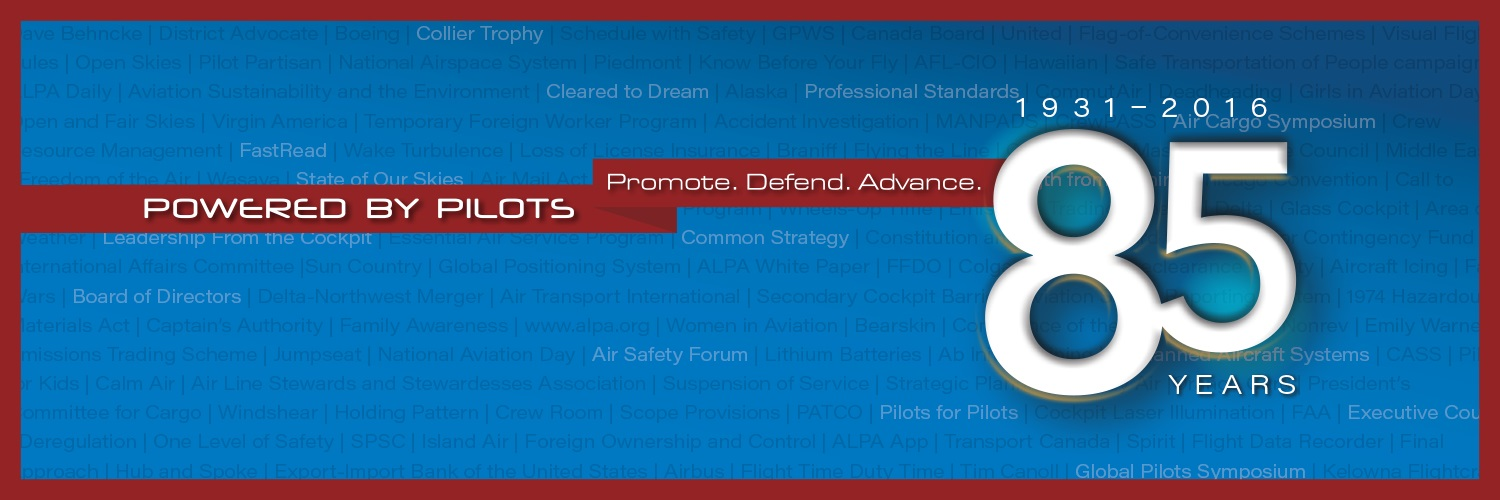In July 1931, 24 “Key Men” founded the Air Line Pilots Association with one goal: to advance aviation safety. Today, ALPA is the largest airline pilot union in the world, with more than 53,000 pilots at 31 airlines in the United States and Canada. Our pilots safely transport hundreds of thousands of passengers and tons of cargo around the world every day.
In recognition of our 85th anniversary this week, we’ll be highlighting a handful of key aircraft that helped revolutionize the airline industry since ALPA was founded, taking an upfront look at a how pilots’ “front offices” have changed over the years, and how ALPA has helped make them safer.
Growing an Industry: 1930s and 1940s
In 1931, the 24 “Key Men” who found ALPA fly simple aircraft like Douglas “M” series mail planes, which are made of steel tubing and a cotton fabric covering. The cockpit includes:
- Lever for the throttle
- Stick to control the ailerons and elevators
- Pedals for the rudders
- Switches for the lights and fuel tanks
It does not include:
- Compass
- Airspeed indicator
- Fuel gauges

In 1935, the Douglas DC-3 debuts and quickly replaces trains as the favored means of long-distance travel across the United States and Canada, giving rise to the modern passenger air travel industry.
The increased responsibility of carrying dozens of passengers means pilots need access to more information, better control of the aircraft from the cockpit, additional crewmembers to help manage the workload, and new features such as radio navigation equipment.
With more than 16,000 built, the DC-3 eventually becomes the most-produced airliner of all time.

New ways to improve design and safety continue to be developed and tested, and in 1947, one of the first human factors studies analyzes how pilots read cockpit displays and interact with control knobs. ALPA pilots help create the standard “T” configuration, an ergonomic cockpit layout that enables pilots to operate more safely and efficiently.


